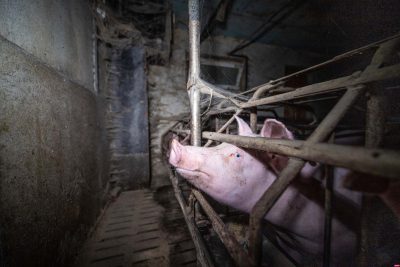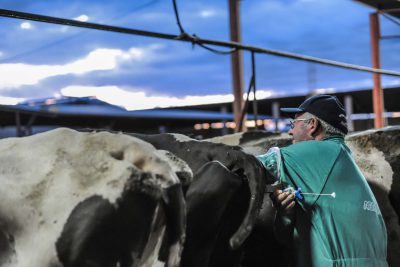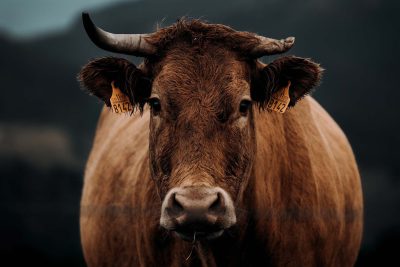Life on a factory farm is short, miserable and pain-filled. The suffering inflicted on pigs—who share so many characteristics with our canine friends, including intelligence and sociability, and even tail-wagging when happy—is so dire, it would lead to jail if someone did the same to dogs.
What Is Pig Factory Farming?
The term ‘factory farming’ describes a highly intensive system that breeds, fattens and slaughters large numbers of animals, while having so little regard for their emotional and physical wellbeing that they may as well be ball bearings on a factory line. Animal agriculture is a business first and foremost, with the aim of maximizing profits and minimizing costs. Under this system, pigs and other animals—every one a sentient, feeling, breathing creature—are pushed to, and often beyond, their biological and psychological limits.
Today, almost every farmed animal in the United States and elsewhere is reared inside vast, industrial factory farms.
How Many Pigs Are Factory Farmed?
Around 98 percent of the 75 million pigs farmed in the United States are reared inside factory farms. It is the industry norm and it is where the vast majority of pig meat comes from.
Is Pig Farming Cruel?
It is unbelievably cruel. Pigs are super smart, highly social animals with distinct personalities and preferences. On factory farms, every natural instinct is thwarted and every expression of natural behavior denied. They may never see sunlight or breathe fresh air. They cannot live in social groups, roam, explore, choose a mate or rear their young. They are given nothing at all to play with or to do – nothing to satisfy their natural curiosity. All factory farming is cruel, and pigs suffer terribly in this harsh and merciless industry.
How Pigs Are Treated In Factory Farms?
In the wild, pigs would walk for miles to find a private place to build a safe nest in which to birth their young. On farms, sows are caged throughout their pregnancy, and these loving mothers have their litters taken from them over and over. They endure forced insemination and repeated pregnancies until they are no longer optimally fertile, then after years of physical and psychological torment, they are trucked to slaughter, with most never having even walked on the earth.
Piglets Have Their Tails Docked
Inside factory farms, these inquisitive, playful animals are given nothing at all to enrich their lives and occupy their minds. Frustrated and bored, they turn to one another and bite each other’s tails or ears, often causing lacerations and other injuries. Instead of improving conditions and easing the animals’ stress and boredom, farmers cut off their tails and clip or grind down their teeth without analgesics. These poor animals suffer severe mental anguish and then they are physically punished for it.
Foraging For Food
One key behavior of pigs is foraging for food. Naturally, they would eat grass, brambles, acorns, apples, earthworms, insects and even carrion. Using their powerful snouts, they turn over rocks, uproot bulbs and tubers, and break up soil to find their favorite foods within. On farms, they are fed highly processed feed, which often includes soy from deforested lands or fish taken from ever-depleted oceans.
Forced Reproduction
Like all animals, sows like to choose their mates, but on factory farms, there is no choice. One boar may ‘service’ every sow, but increasingly farmers inseminate pigs artificially. They insert a rod into each animal’s vagina and push it until into the cervix. Then, they introduce semen from a male, who is also kept miserable and confined inside a factory farm. There is no requirement for a veterinarian to conduct this delicate procedure.
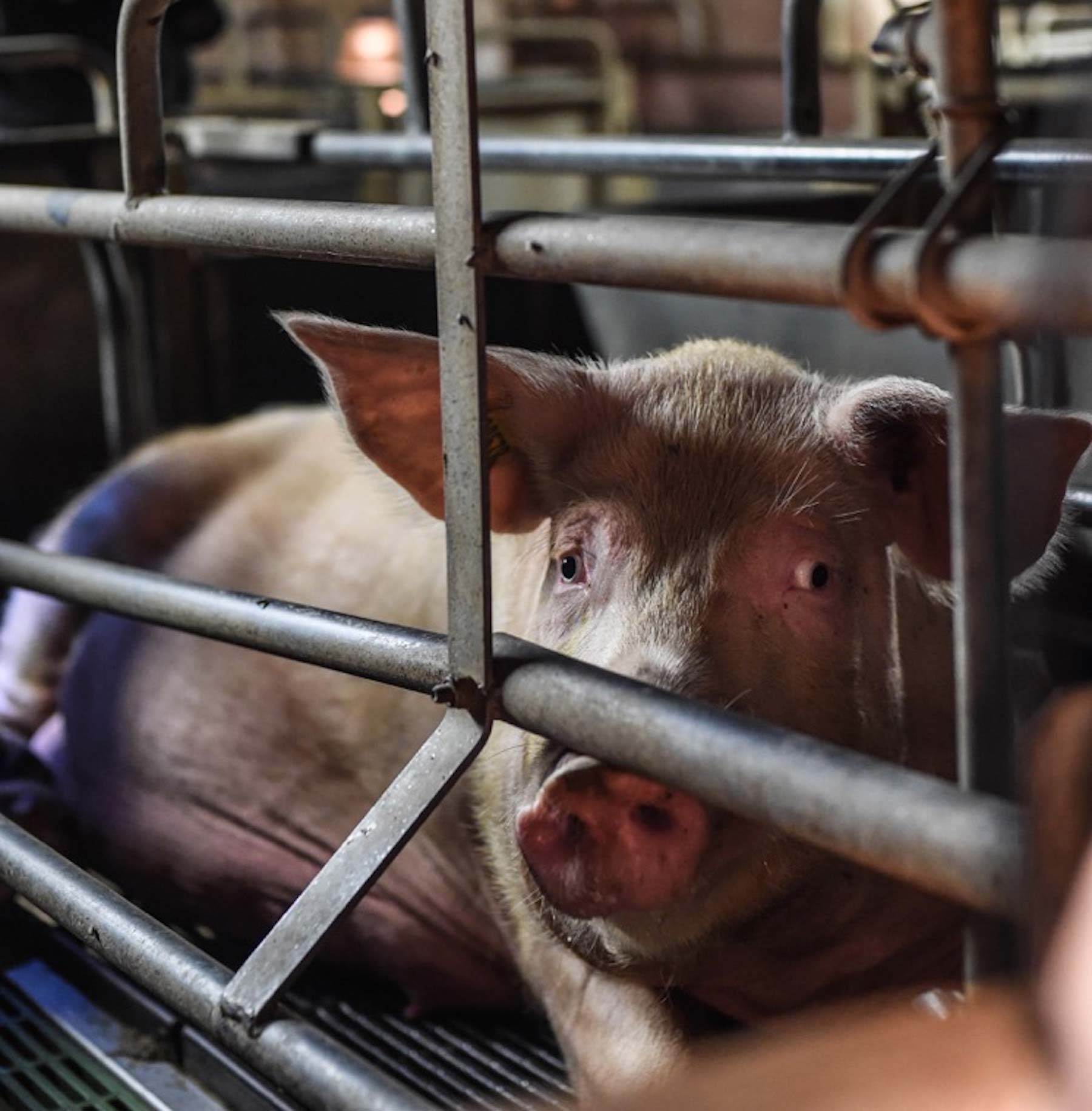
Living In Cages
As if this wasn’t bad enough, most sows are imprisoned inside tiny cages known as ‘gestation crates’ (also known as sow stalls) throughout the entirety of each 16-week pregnancy. In desperation, they go through the motions of nest-building inside their cage but it is, of course, utterly futile. There is no nesting material. These mothers will spend most of their lives here, in a space so small they can step an inch or two forwards or backwards but not turn around. The cages are so cruel that they are illegal in the UK, the European Union and elsewhere, but shockingly they remain legal in most U.S. states. However, farrowing crates—cages where pigs give birth—are legal in almost every country in the world.
Living In Their Own Waste
Pigs are very clean animals, wallowing in mud only to cool down in summer. The amount of slurry produced in a factory farm, however, means there is often no escape from the filth. The animals may be forced to stand, lie and sleep in their own waste.
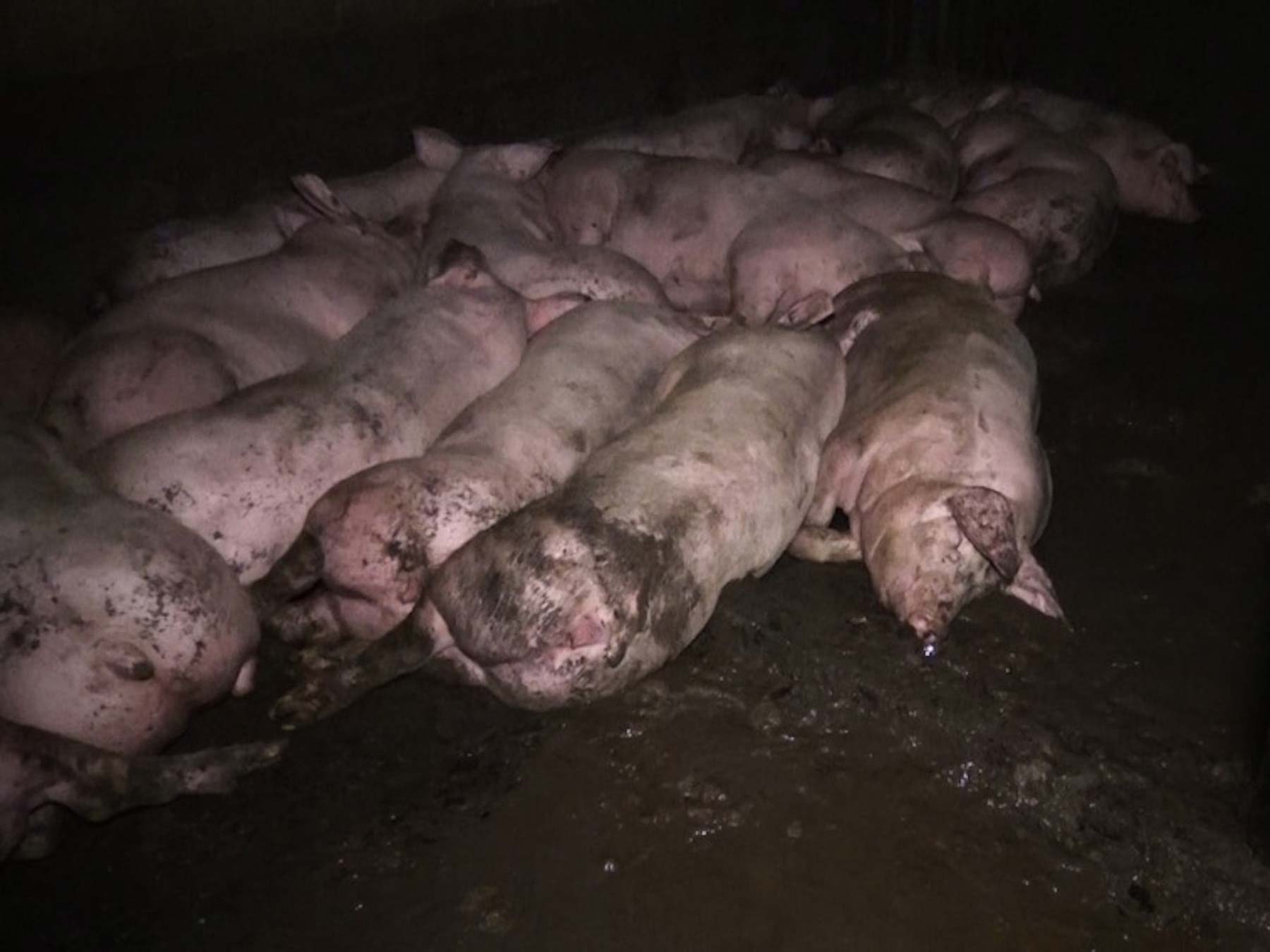
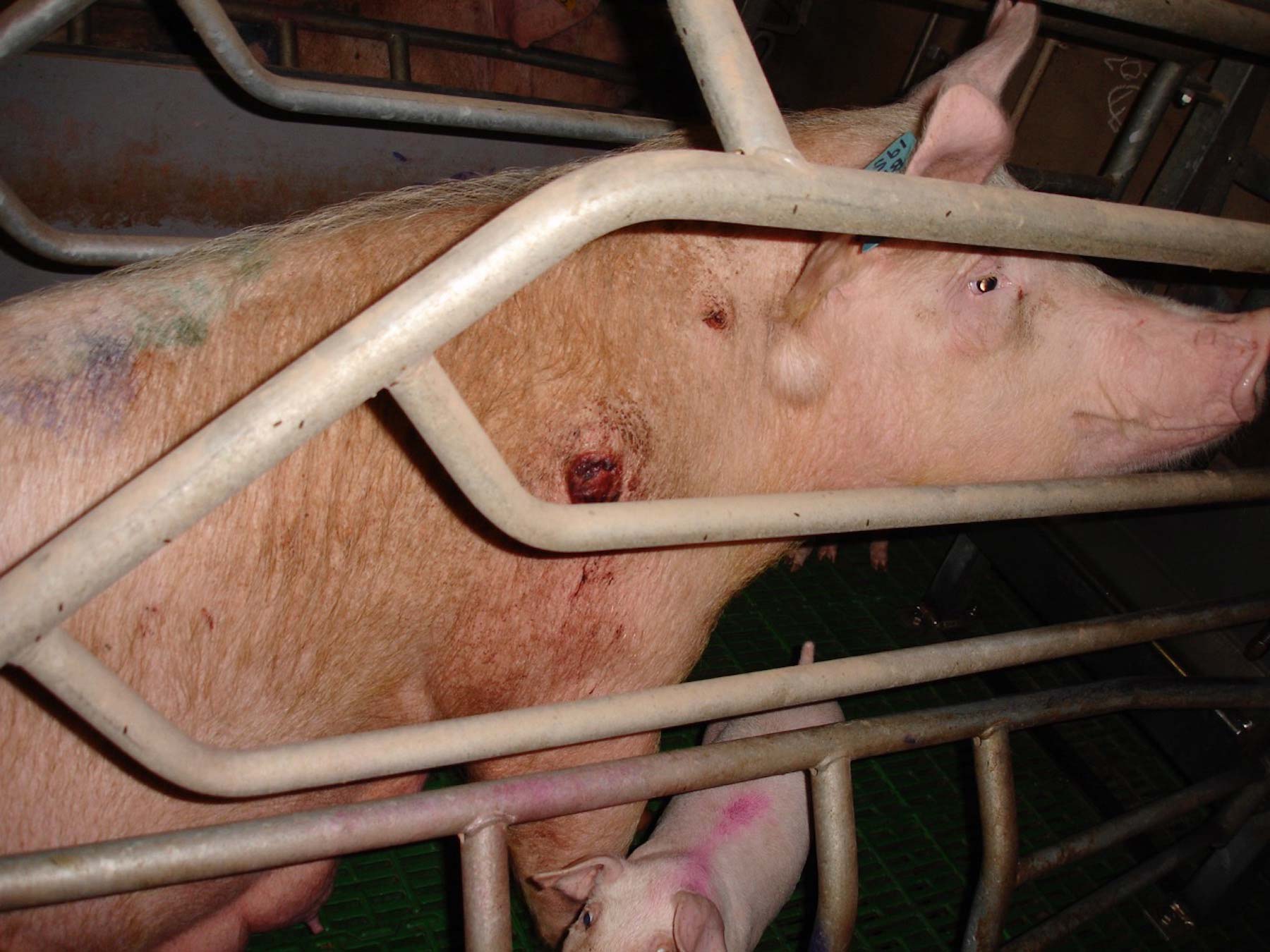
Stand And Sleep On Concrete Floors
Whether they are in gestation crates or in pens, pigs are often kept on concrete floors. These can cause appalling pressure sores on the shoulders of sows while slatted concrete floors, which allow waste to fall through, make lameness more likely.
Cruel Transportation
When just a few months old, pigs are transported to the slaughterhouse, often over long distances and in all weathers. Pigs are sensitive to high temperatures and humidity and, because they sweat only through their snouts, they are prone to dehydration and heat stroke. The trucks that carry them are often poorly ventilated, and the animals are crammed in tightly. Unsurprisingly, many do not survive the journey.

How Pigs Are Killed In Slaughterhouses?
Those who do survive the long and exhausting journey face a terrifying end on arrival. Some will be forced into gas chambers and will die from suffocation. Others will have an electric current passed through their brains, which is supposed to stun them but often fails, and will be hoisted by a hind leg and their throats will be cut. It’s not just the young who endure this. Their mothers suffer the same fate when they break down under the heavy physical, emotional and psychological toll of life on a factory farm.
Environmental Impacts
Not only is factory farming bad for pigs, it’s bad for the planet, and that makes it bad for us, too. Hog farms produce so much slurry that there is nowhere for it to be safely disposed of. So, it is stored in immense ‘lagoons’, the fumes of which regularly kill farm workers and cause respiratory difficulties in people who work at the farm or even live nearby. All too often, the slurry leaches out and gets into waterways, fueling algal blooms, which cause deoxygenation and kill aquatic life. In oceans where it does the same, it causes ocean dead zones.
Another serious issue is water wastage. Animal agriculture uses more water than plant agriculture, and pigs are said to be the thirstiest animals of all. An average-sized north American pig farm with 80,000 pigs needs nearly 75m gallons of fresh water a year. A large one, which might have one million or more pigs, may need as much as a city. As water shortages become more widespread and serious, can we really afford to waste this precious resource?
Animal agriculture is also responsible for 14.5 percent of all human-generated greenhouse gas emissions. That is more than the fuel from every car, plane, truck, ship, bus and train on the planet. To prevent climate breakdown, we must stop farming animals.

Conclusion
Factory farming gives animals the absolute bare minimum needed for the majority of them to stay alive long enough to reach slaughter weight. And it gives them not one single thing more. If we want a compassionate world, one where fairness and justice take center stage, then we absolutely must start by boycotting factory farms.
